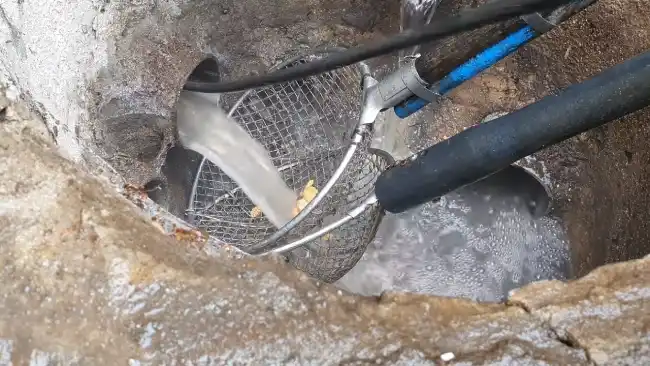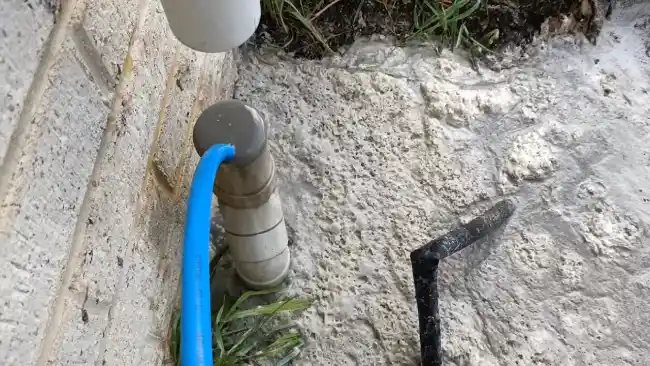Last Updated on November 14, 2023
Dealing with clogged drains with fats is a frustrating and unpleasant experience. When fat is poured down the drain, it can solidify and stick to the walls of the pipes, gradually building up and obstructing the flow of water. The question is, how do you clear a drain blocked with fat?
Clearing a drain blocked with fat requires boiling water. Baking soda and vinegar, salt & hot water. A plunger, manual removal, and chemical drain cleaners are also viable methods that can help to clear the blockage.
Let’s explore the above techniques to effectively clear a drain clogged with fat, ranging from simple home remedies to more hands-on approaches.
How to Clear a Drain Blocked with Fat: Six Methods

While fat can solidify and adhere to the drain walls, causing a stubborn blockage, there are several methods you can try to clear the drain. Here are some common approaches:
- Boiling Water
- Baking Soda and Vinegar
- Salt and Hot Water
- Plunger
- Manual Removal
- Chemical Drain Cleaners
Technique 01: Boiling Water
Boiling a pot of water and pouring it down the drain in stages can help to dissolve and flush away grease that has built up. This method uses hot water which is capable of melting and washing away the fat clogging the drain pipes.
Be sure that your drain pipes are well-made. Otherwise, the extreme heat may cause them to deform or crack.
Technique 02: Baking Soda and Vinegar
Combining baking soda and white vinegar is a popular technique to unblock drains clogged with fat buildup. This is due to a chemical reaction that the two ingredients create, which helps break down the fat, making it easier to clear the drain.
To use this technique, combine half a cup of baking soda with half a cup of white vinegar. Pour the mixture into the blocked drain, let it fizz, and work for several minutes. To remove any remaining debris, flush the drain with hot water once the reaction has subsided.
The method is useful for removing fat buildup but not for removing hair or foreign objects lodged in pipes.
Technique 03: Salt and Hot Water
If you pour a quarter cup of salt and boiling water down the drain, then flush with hot water, you can dislodge and wash away fat deposits.
The salt acts as an abrasive that can help break up the fat, while the hot water helps to melt it. This method may take some time, but it can effectively unclog a blocked drain caused by fat. Also, this technique requires no special tools or chemicals and is relatively easy.
By doing it right, you could avoid further clogging.
Technique 04: Plunger
If you’re dealing with a clogged drain, the plunger technique may come in handy. This involves creating a tight seal over the drain opening with a plunger and plunging vigorously for up to 30 seconds.
Fill the sink or tub with enough water to cover the drain opening to build pressure and remove the clog to ensure this method works. Repeat the process several times until the obstruction is cleared.
But you should note that this technique works best on light blockages such as those caused by fat, soap scum, or hair buildup. For more serious blockages, consider using manual or chemical cleaners to prevent further damage to your plumbing system.
Technique 05: Manual Removal
Manual removal is a viable solution when dealing with blocked drains caused by fatty buildups. An elongated and flexible object can utilize to meticulously break apart the obstruction and retrieve as much of it as possible.
It’s recommended to wear gloves to ensure protection against any hazardous bacteria or substances present in the drain. While reaching the drain, caution must be exercised to avoid pushing the blockage further down.
Plumber’s snakes or wire hangers are commonly used for this purpose. But it’s essential to be careful of their sharp edges when inserting them into the drain. As soon as the fatty deposits are broken down, you have to manually pull them from the drain pipe and dispose of them.
Technique 06: Chemical Drain Cleaners
Drain cleaners that contain chemical agents are effective at breaking up and removing stubborn fatty obstructions. These products are specifically formulated to dissolve fat or grease, making them ideal for unclogging blocked drains.
But remember that these cleaners can be harsh and should only be used cautiously. It is advisable to read the instructions carefully before use and ensure good ventilation while using chemical drain cleaners.
In most cases, it is necessary to repeat the cleaner’s application multiple times to remove all traces of the obstruction from the pipes.
How can I prevent fat blockages in the drain in the future?

To ensure the longevity of drain health, it is essential to take preventative measures against fat build-up. One way to do this is to avoid pouring fats, oils, and grease down the drain as much as possible.
Instead, put them in a separate container and throw them out. Also, regular cleaning of drains and using a drain strainer or trap can help catch debris before it has a chance to accumulate into a blockage.
As an extra precaution, enzyme-based drain cleaners can periodically break down buildup before it becomes an issue. Such cleaners may be available at local hardware stores or online retailers.
Ultimately following these steps will minimize the risk of future blockages due to fat accumulation in drains.
Say Goodbye to Drain Blockages
Fat blockages in drains may seem like a daunting issue to resolve. But, several methods can be utilized to clear the obstruction.
Home remedies such as baking soda and vinegar, or commercial chemical drain cleaners, are effective solutions to clearing clogged pipes caused by fatty buildup.
Also, ensuring that fats and oils are disposed of properly and never poured down the sink can help prevent future blockages from forming. With these tips considered, keeping drains clear and functional for a long time is possible.

